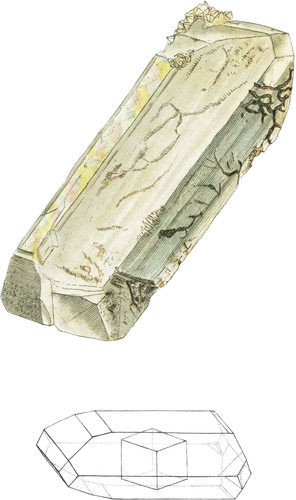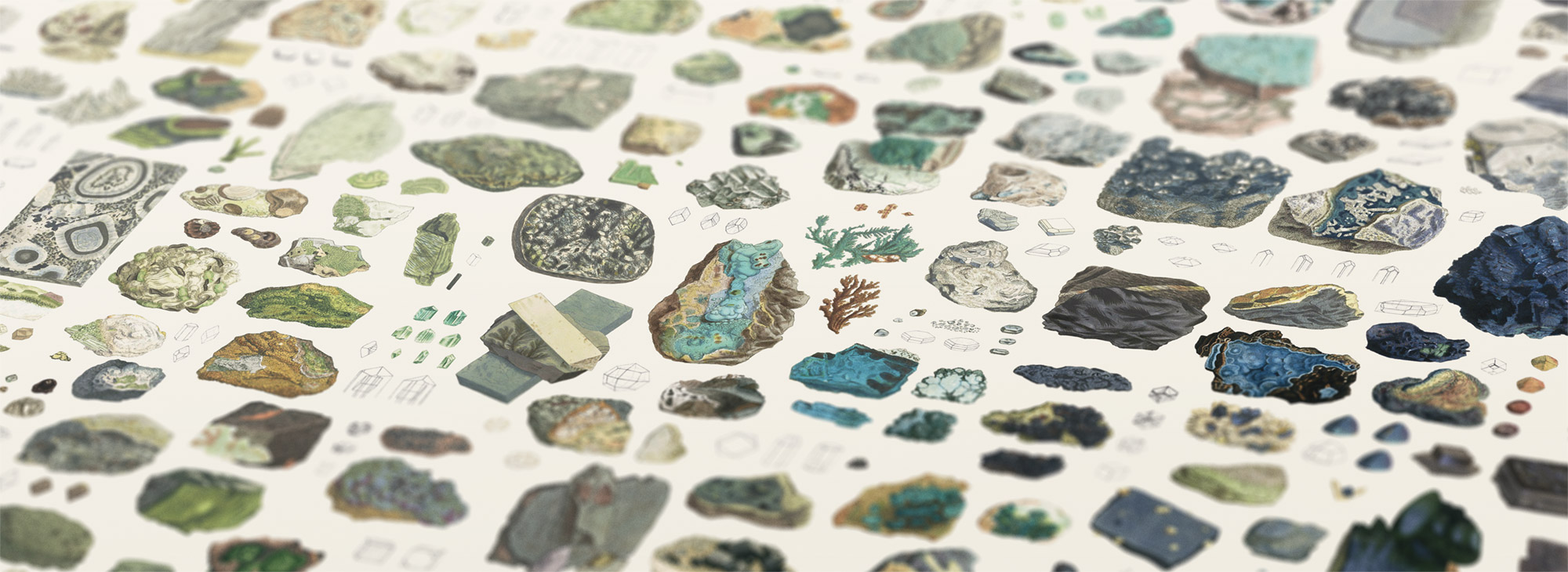 Enlarge
Enlarge
British Mineralogy
Sulphate of Barytes
- Class 2. Earths.
- Order 1. Homogeneous.
- Gen. 6. Barytes.
- Spec. Sulphate.
- Div. 1. Crystallized.
The specimen from which this figure was taken is in the collection of Mr. Professor Hailstone at Cambridge, to whom it was presented by John Probart, Esq., of Copthorne near Shrewsbury, in whose intersting museum the Professor saw several other crystals of the same kind, but of larger dimensions, and understood that they were found in some part of Shropshire; but he had no opportunity of ascertaining any further particulars respecting their native beds, and situation in the earth.
It is a valuable specimen, to show the nature of a crystal terminated on all sides, and independent, or not fixed on any gangue. This is not common to sulphate of barytes. it has only a few quartz crystals at the upper corner, as expressed in the figure. The modification is altogether singular, and is a variety not yet figured; we find it has 23 faces, some scarcely distinct. The crystal is lengthened parallel to the obtuse angles of the rhomb, and the upper primitive face, which shows the prismatic hues somewhat below the surface It has little hollows as it were unsupplied by molecules; this is the case also in other parts, giving the crystal a rough appearance. These hollows agree very well, when narrowly examined, with the shape of the nucleus. The general form will be better understood by examining the geometrical figure at the bottom, containing a figure of the primitive or rhomboidal prism: see tab. 70; allowing for the perspective, and conceiving the sharp angles as the obtuse ones, viz. the right and left hand angles; the upper and lower faces and the four corners are primitive faces corresponding with the six faces of the nucleus. The four larger octangular faces are evidently parallel to the acute corners of the rhomb (allowing for the perspective). In their formation, the laminæ are (as it were) arranged on the upper and under primitive faces, decreasing from the four acute angles of the nucleus from four obtuse angles; the same also forming 2 long quadrangular faces at the left hand end, and 2 large hexangular ones at the upper end of the geometrical figure coming in contact with the primitive faces at the corners, at an angle of about 123° with the upper or under primitive faces. Next to these, on the same angle of the nucleus, are two other 4-side faces above and below, the larger at an angle of 140° 59′ 2″ upon the primitive, and the smaller at one of 162° 2′ 44″. These may be distinctly seen on the top of the upper figure.
The Cumberland specimens seem to have the face of 123°, which appears not to have been seen by Haüy. Mr. Hailstone’s specimen has two small faces marked by dotted lines on the right hand front corner, and one on the right hand corner at the back, which agree with the faces y of Haüy. This I have not seen in any other English specimen.

